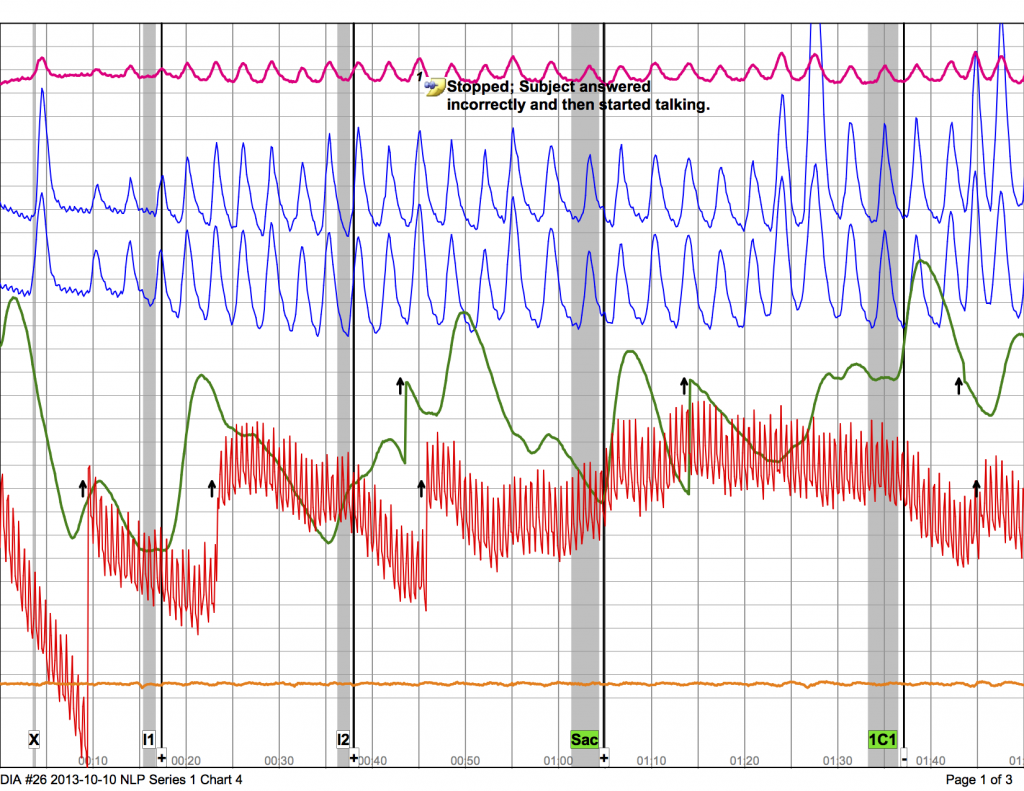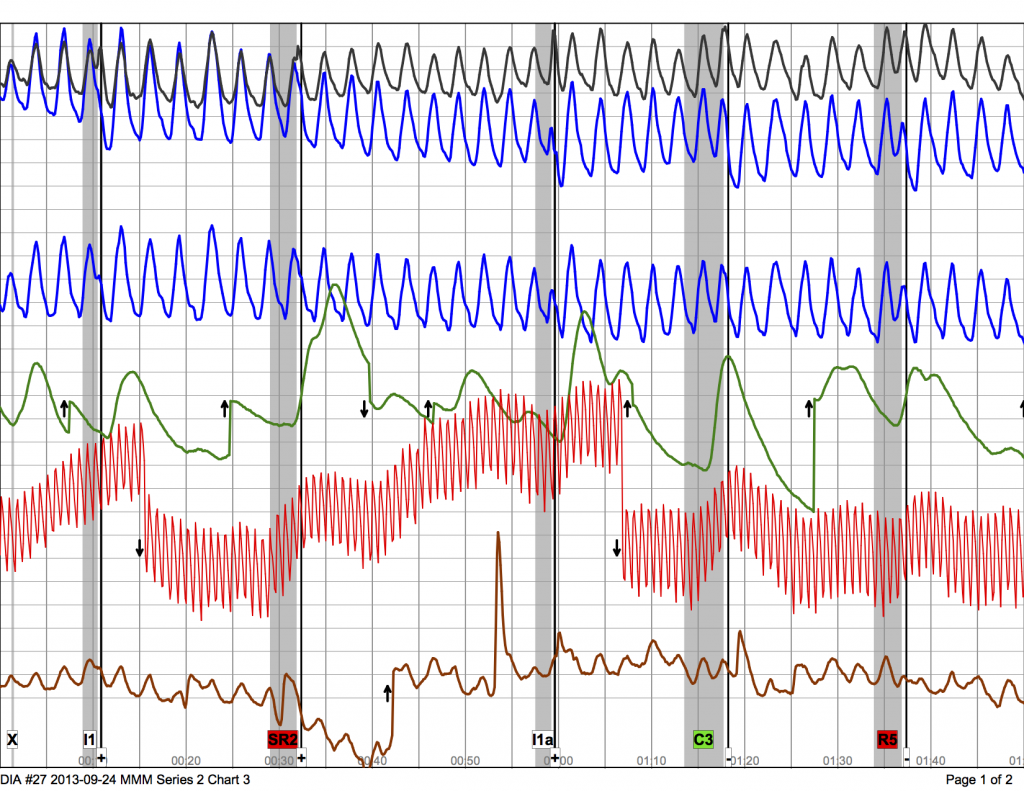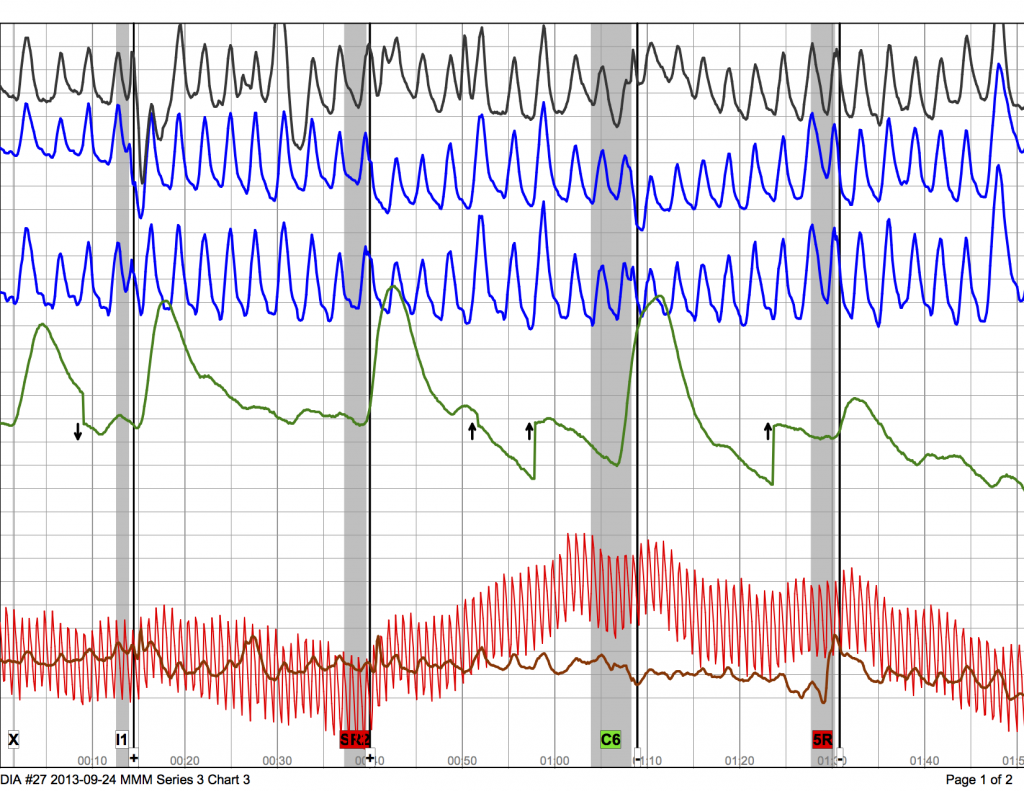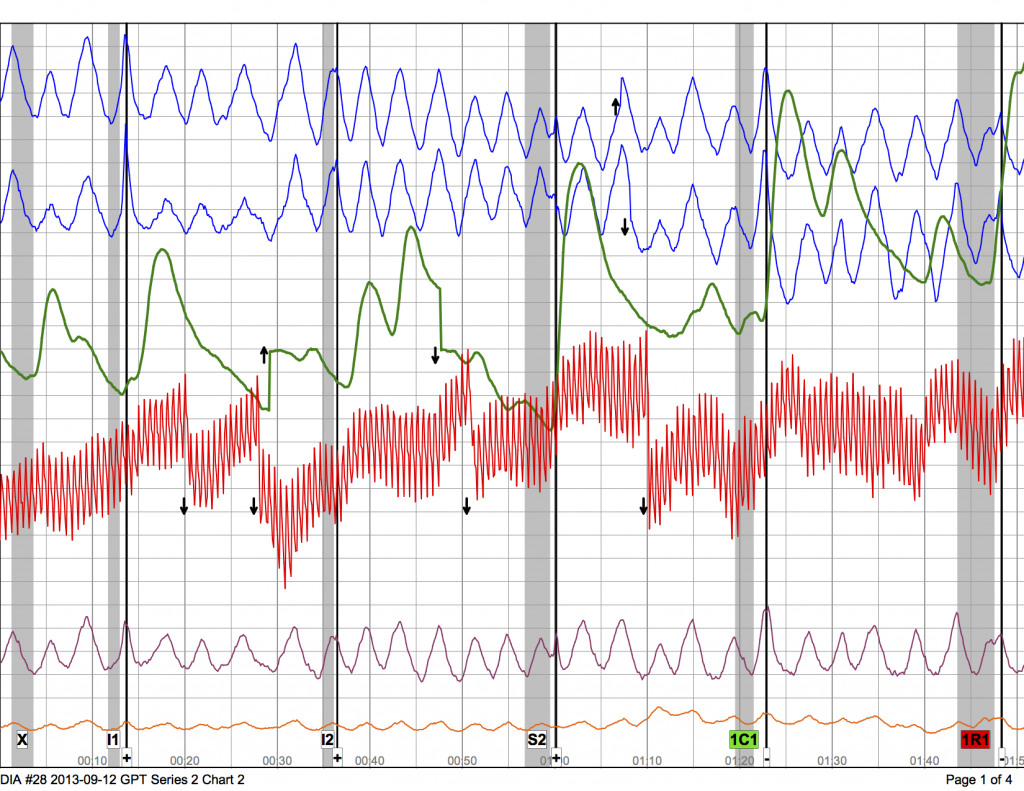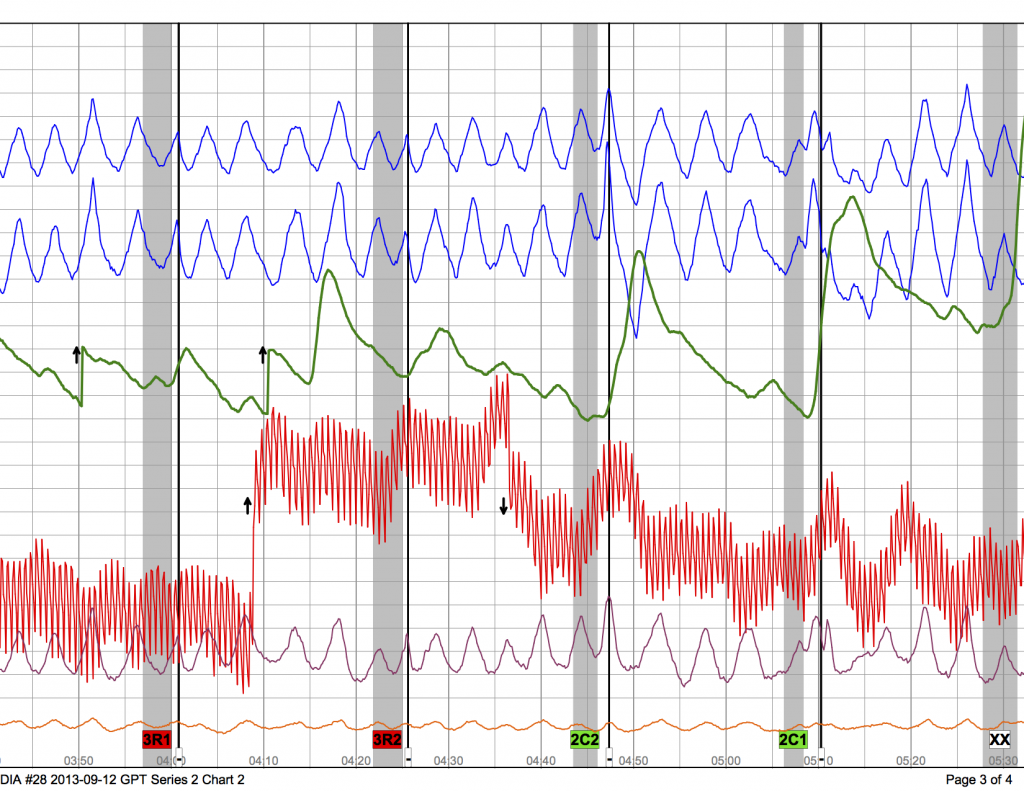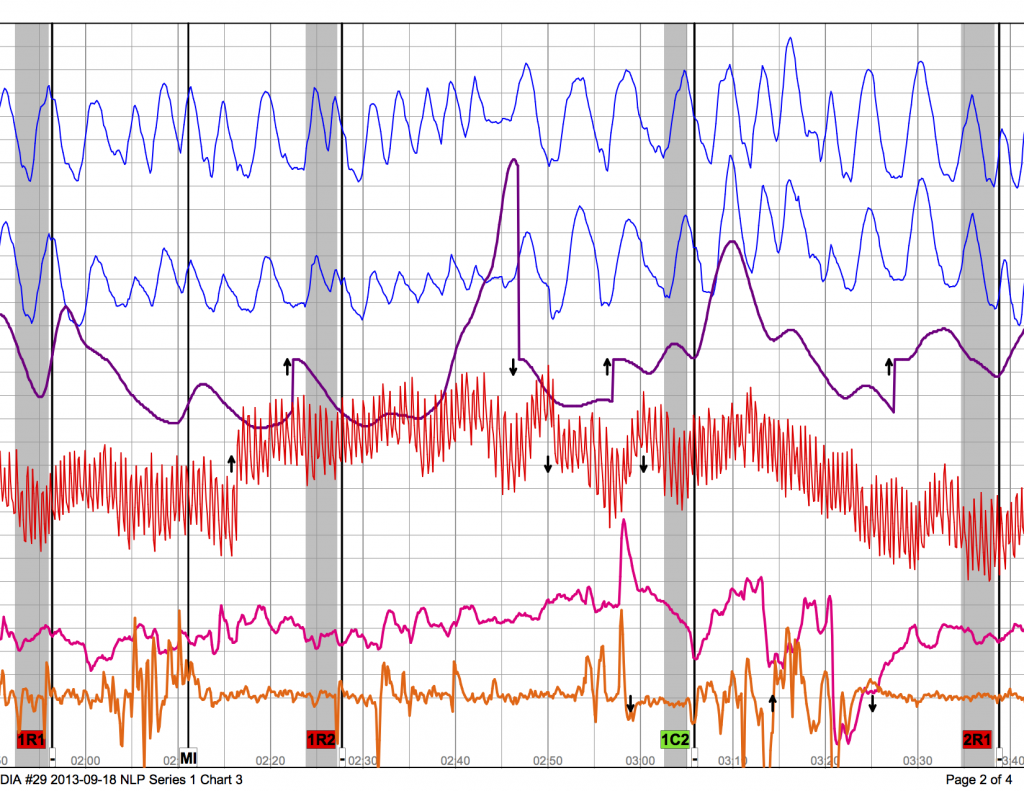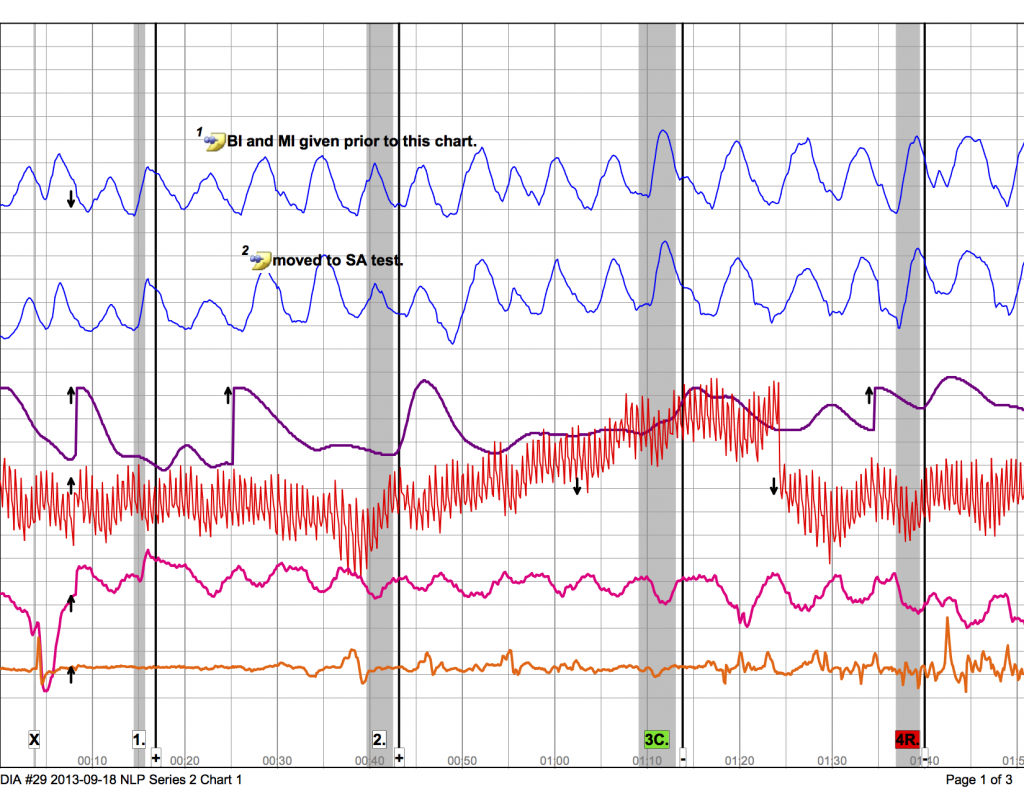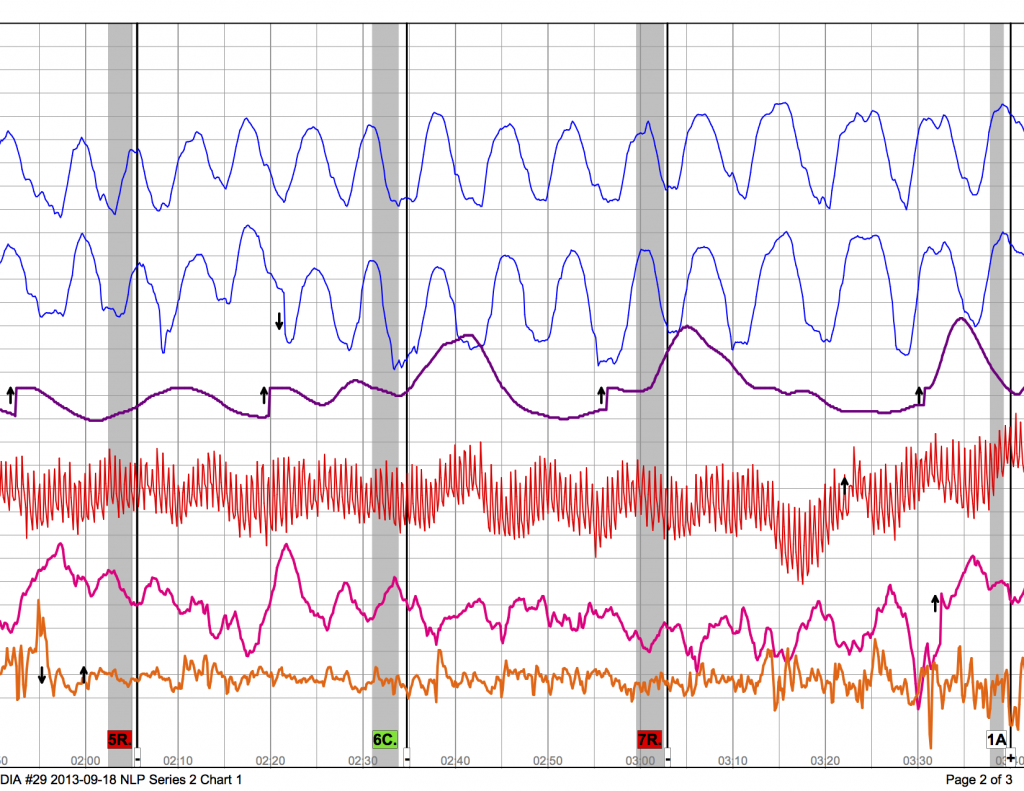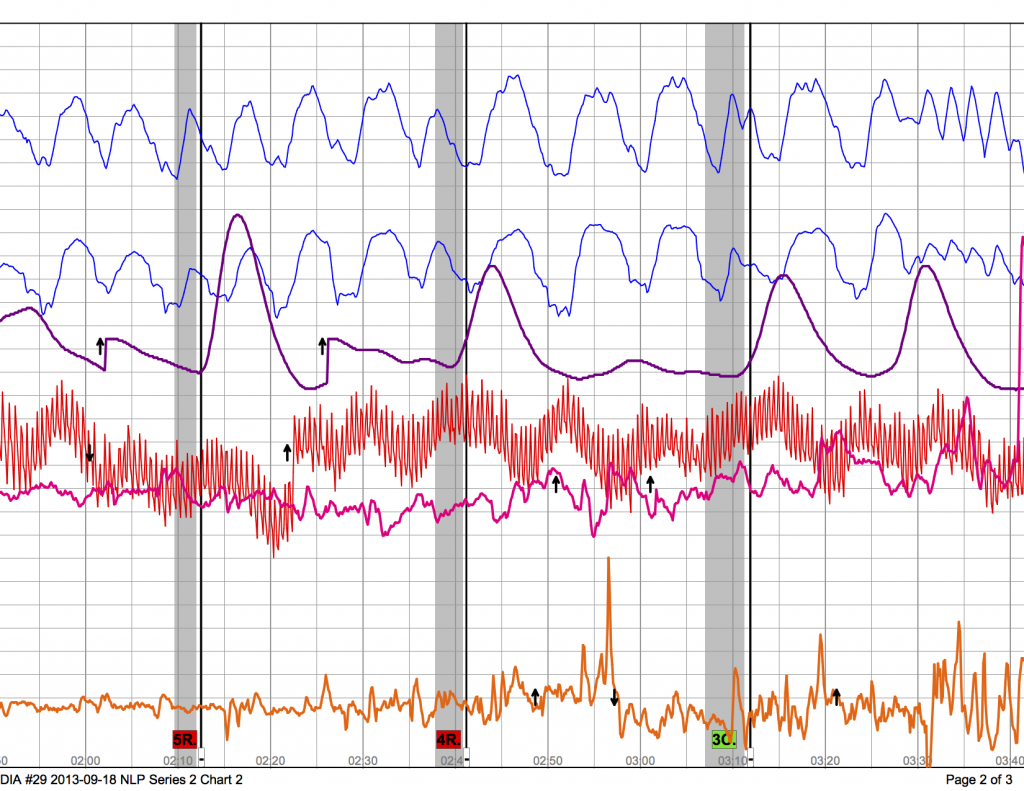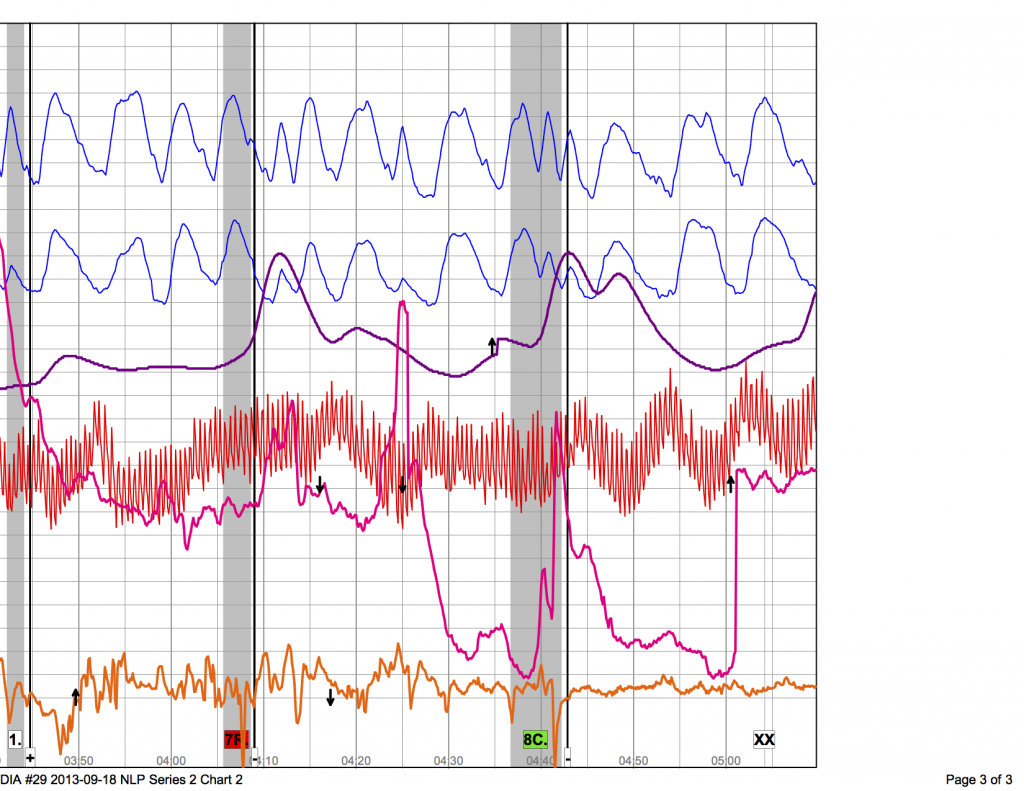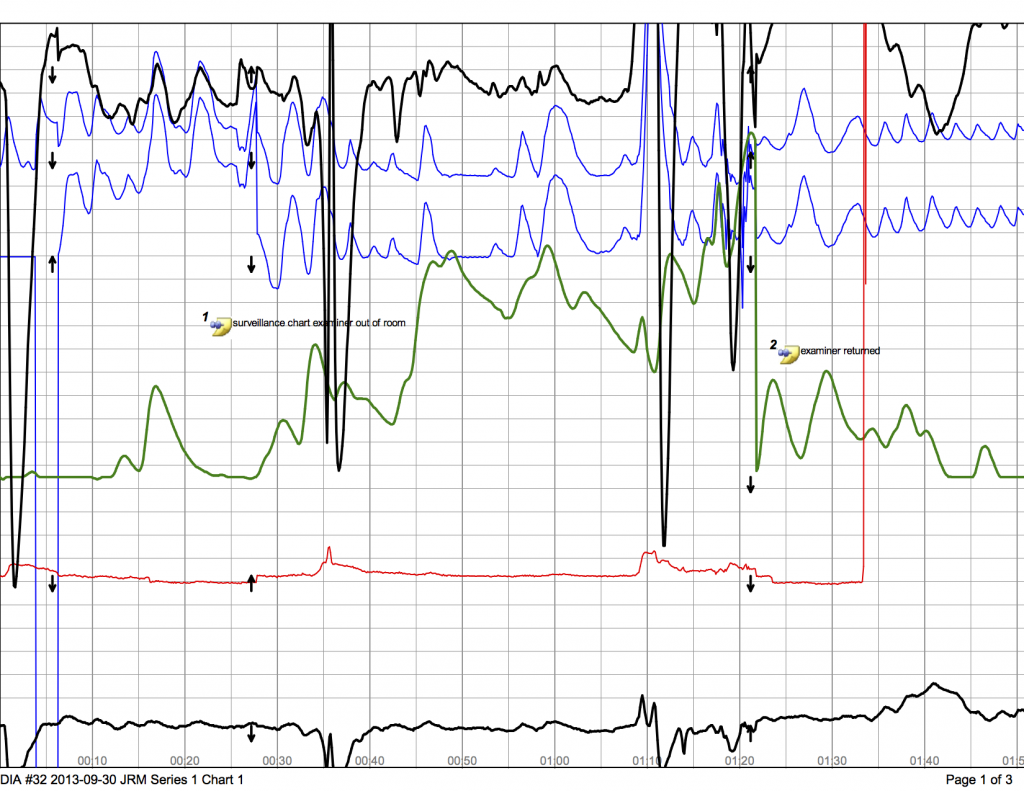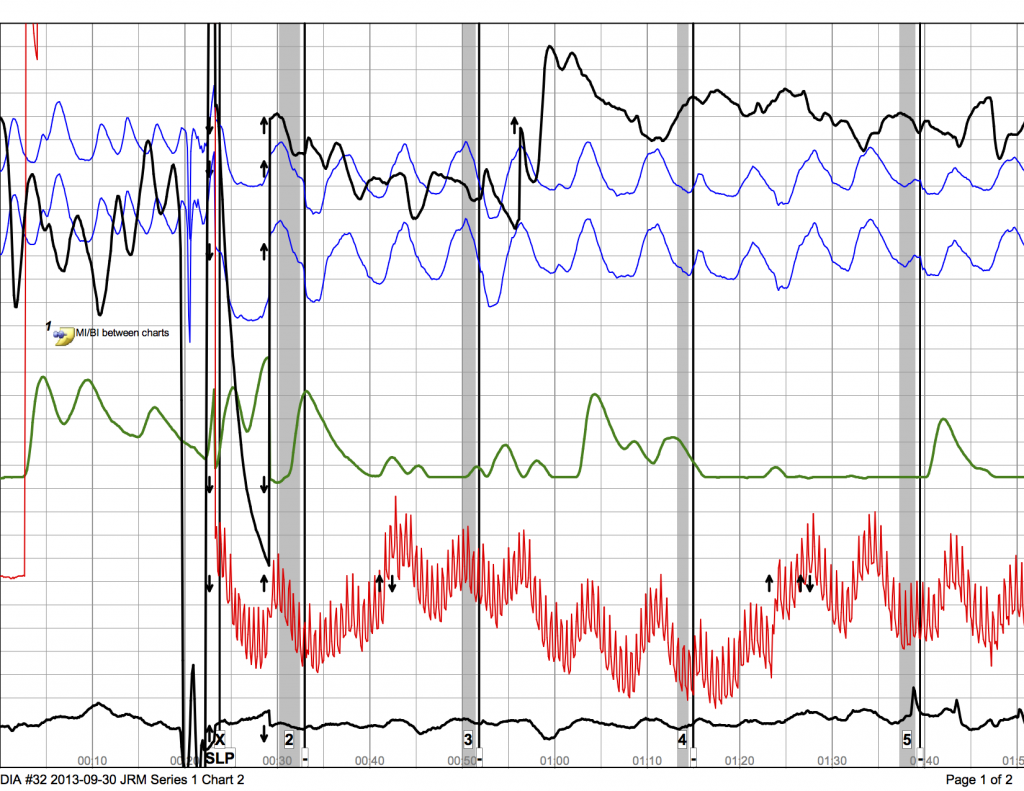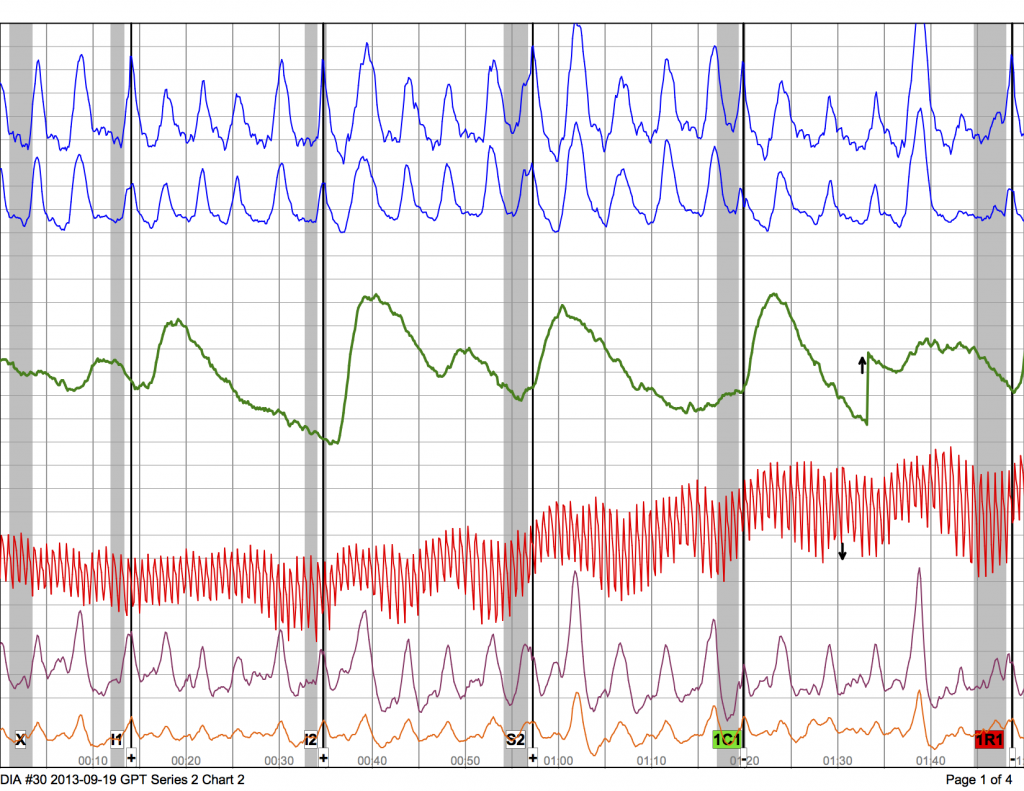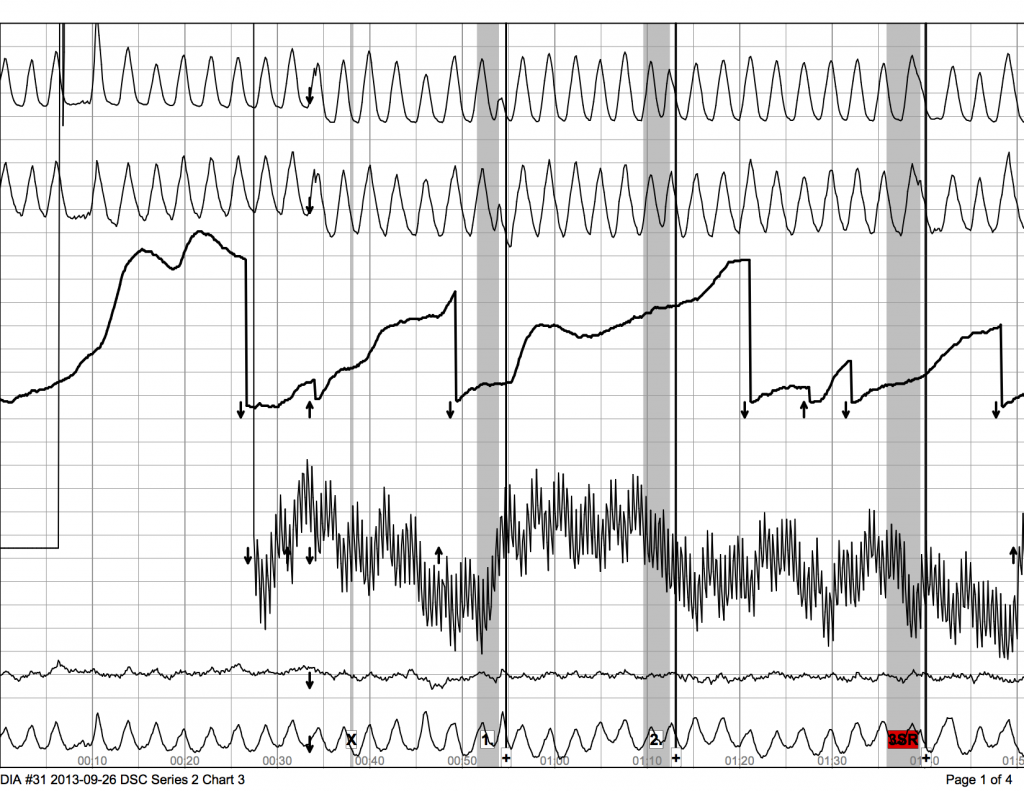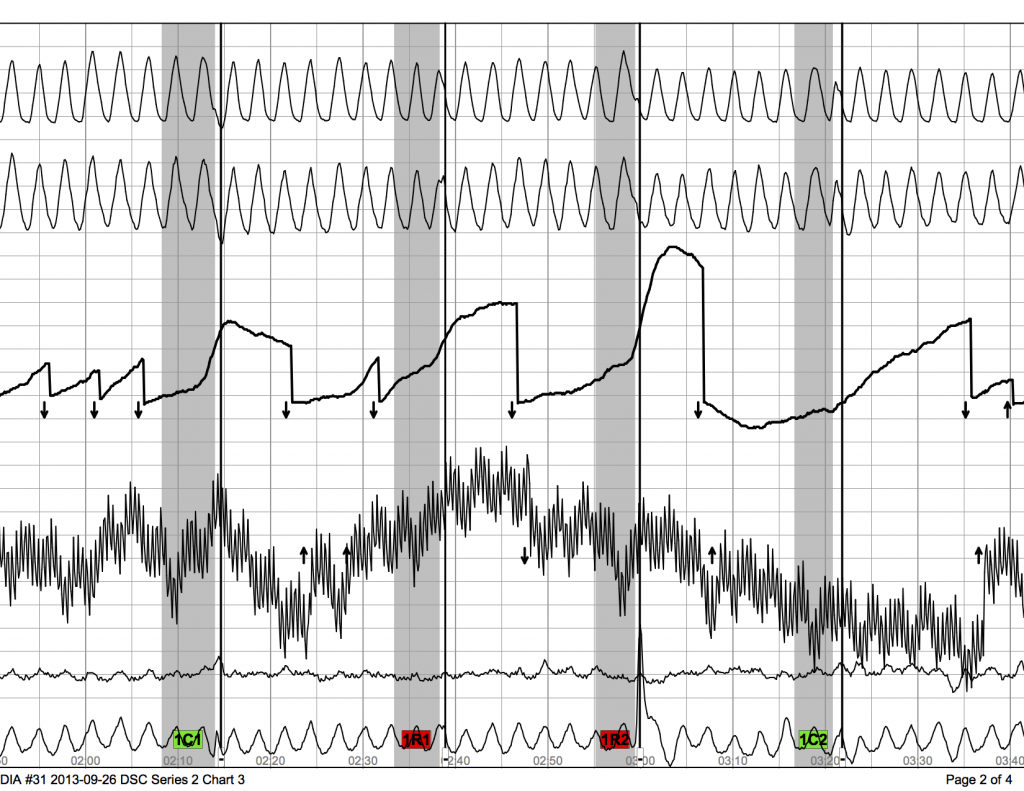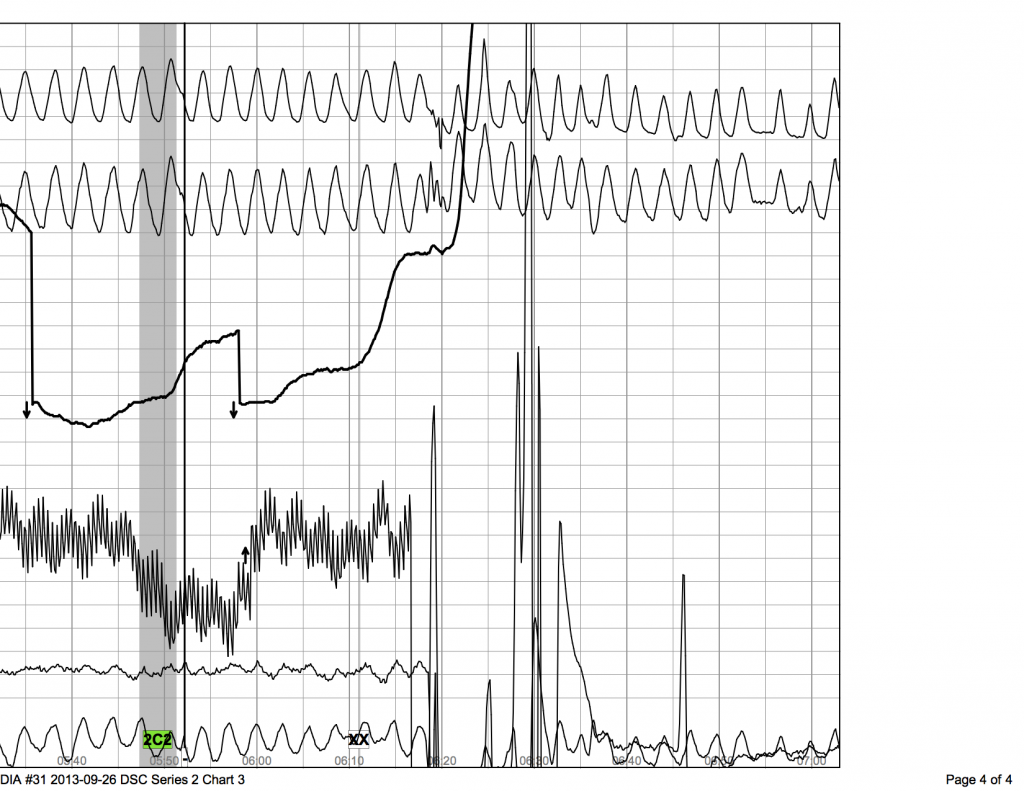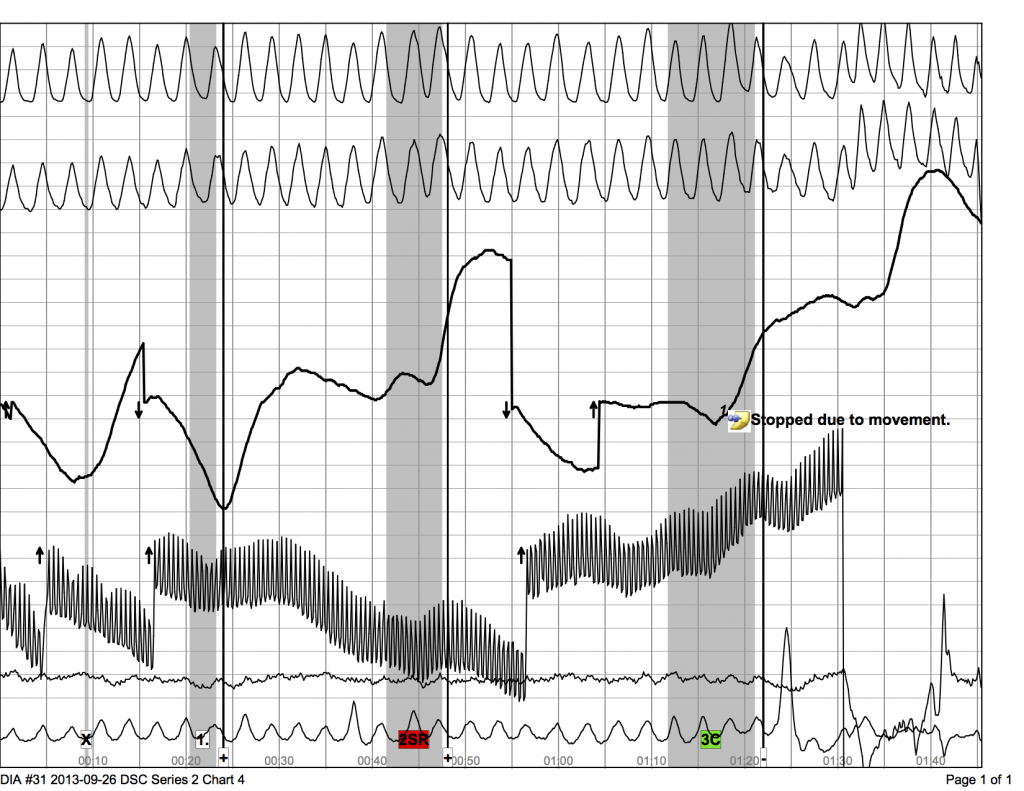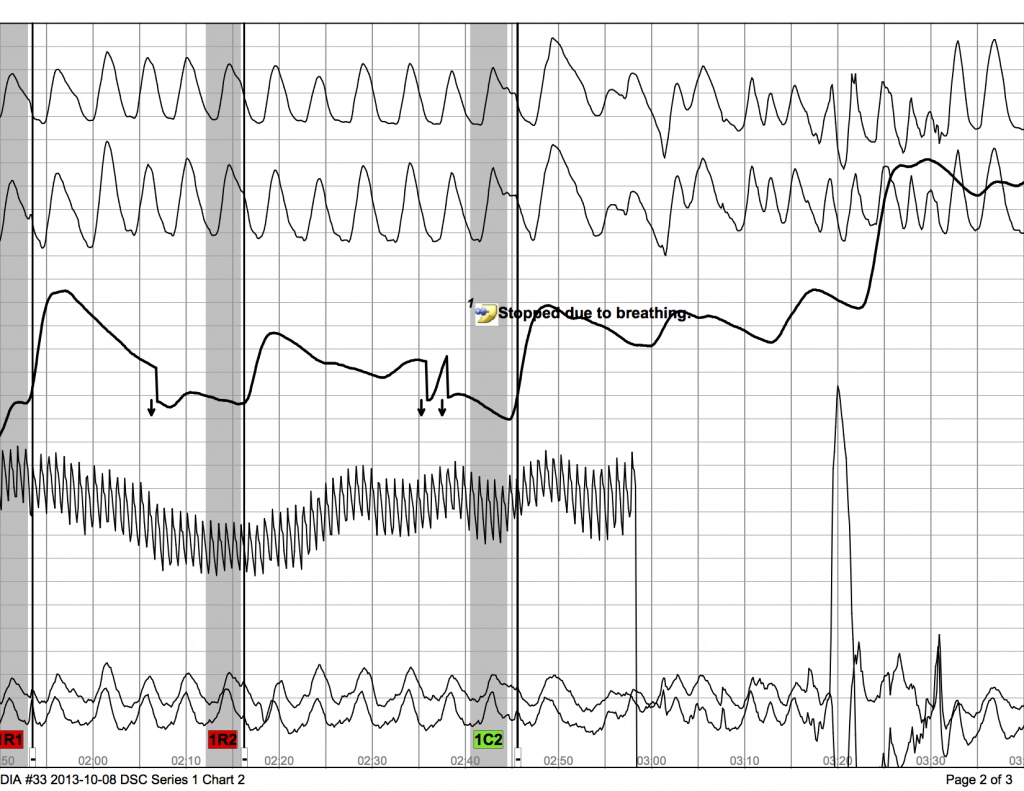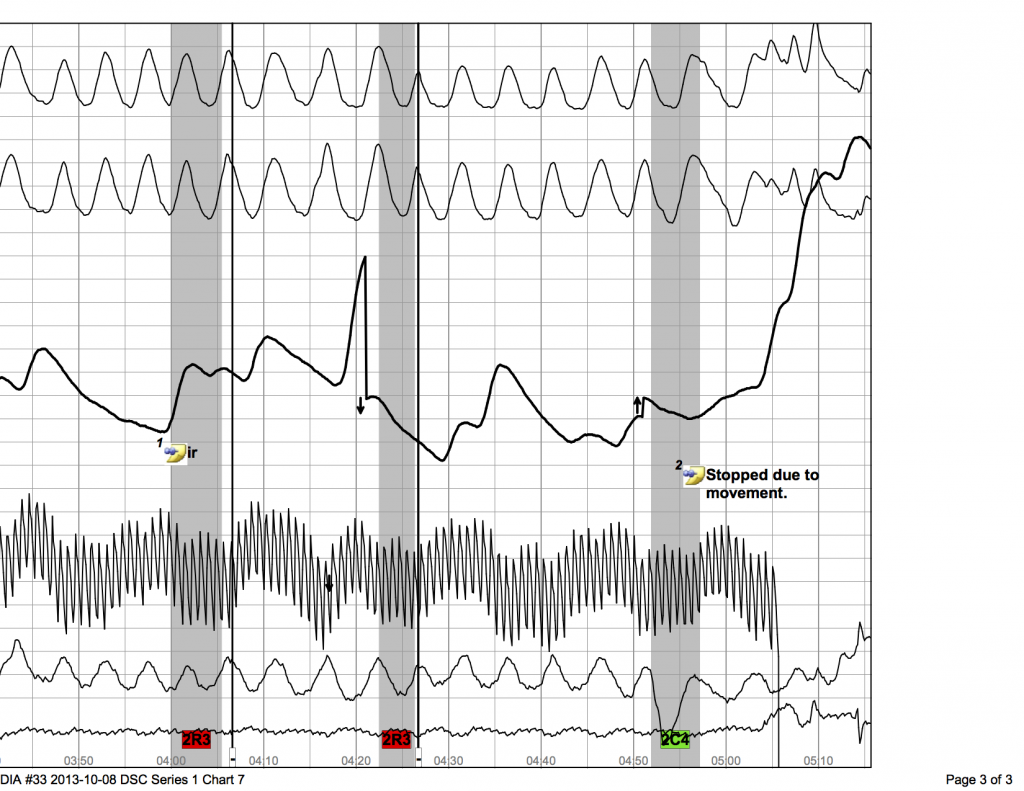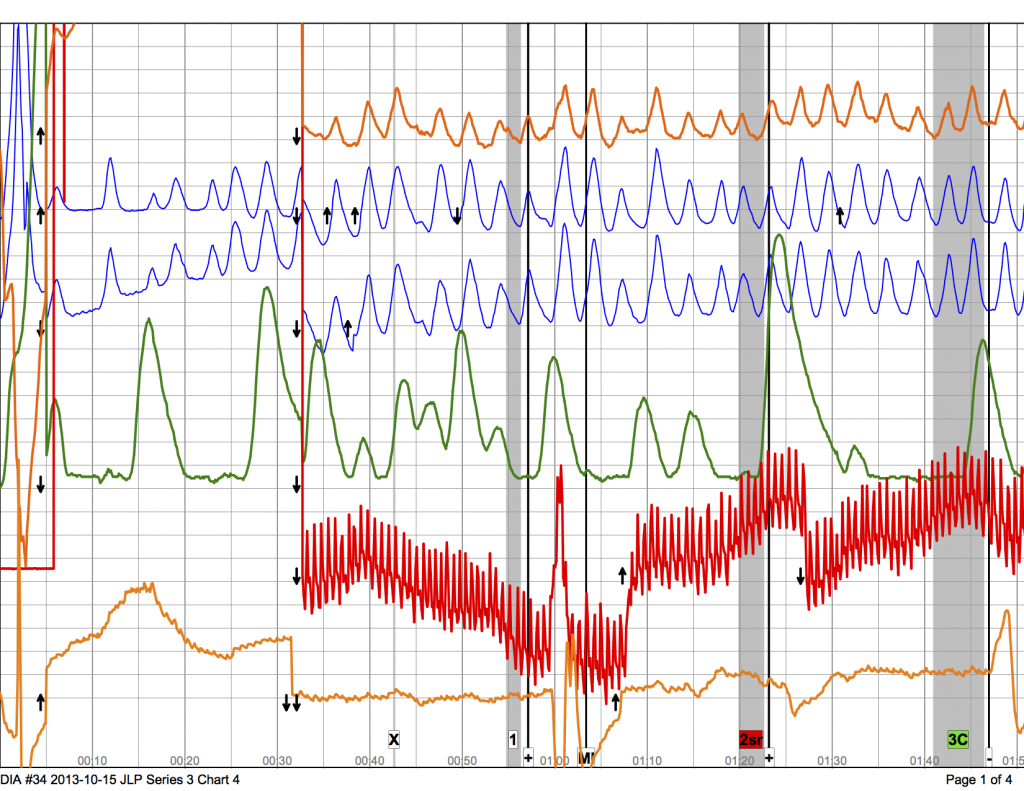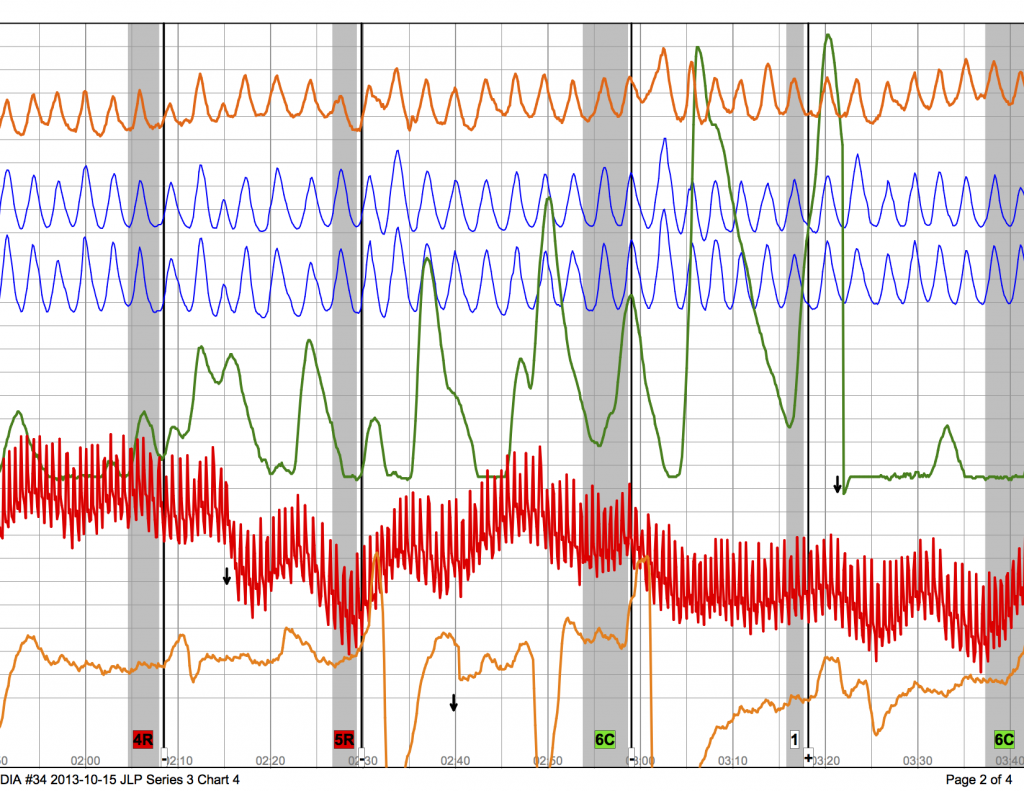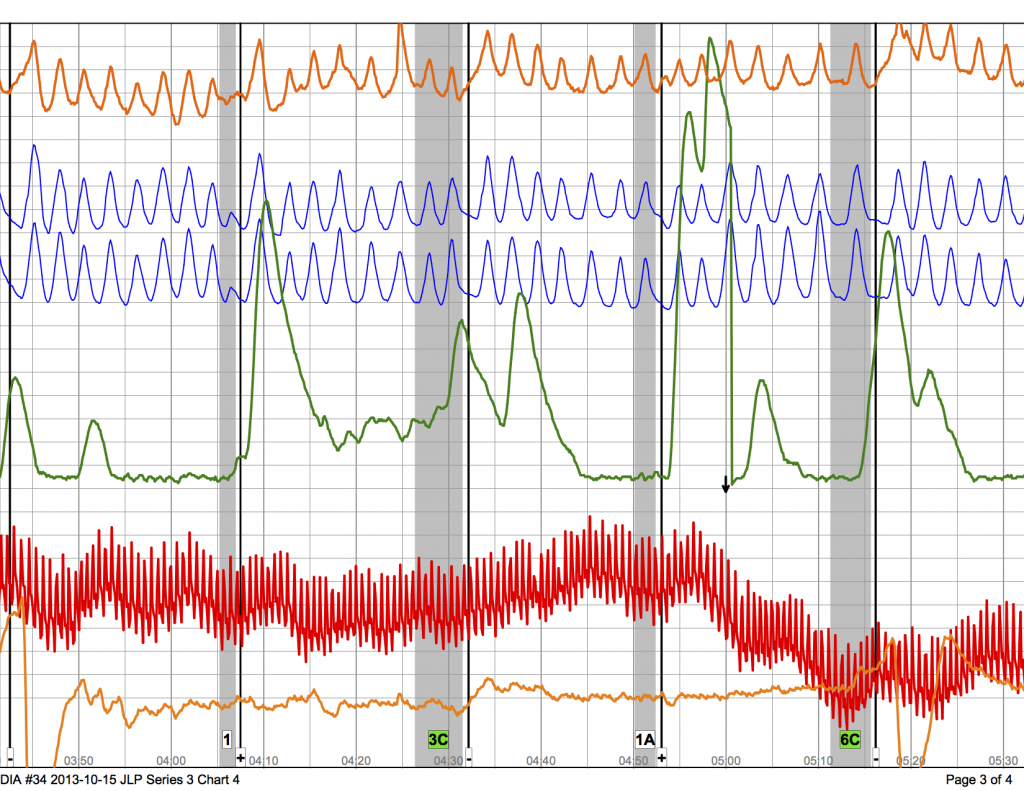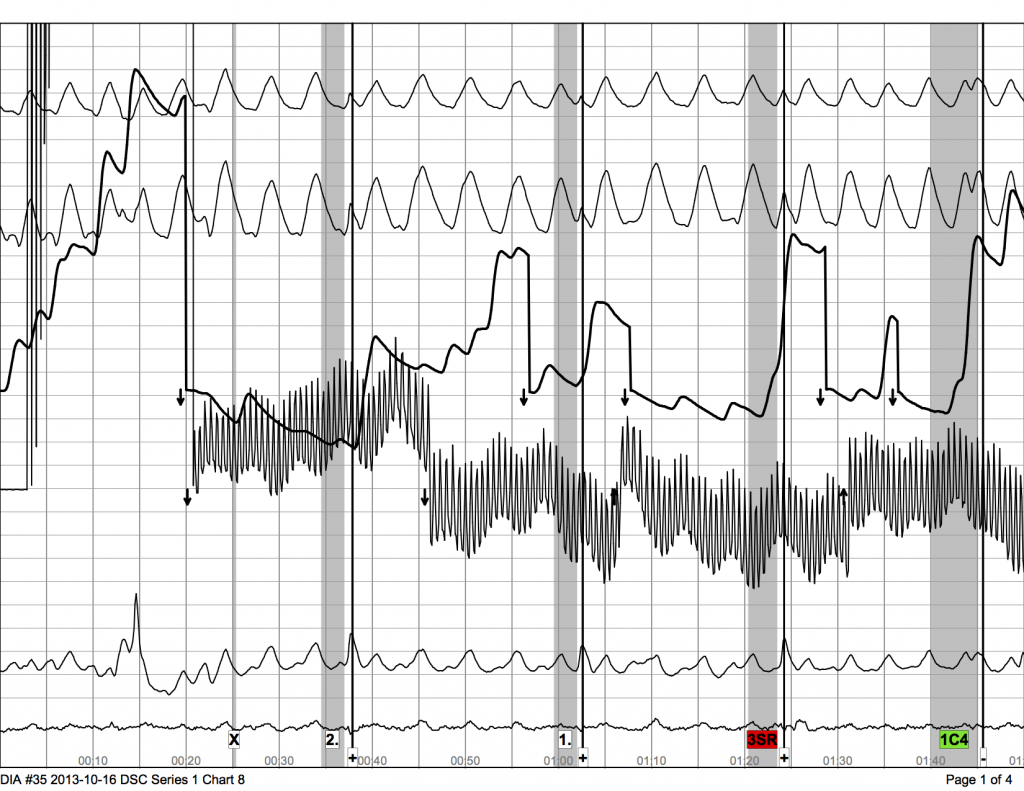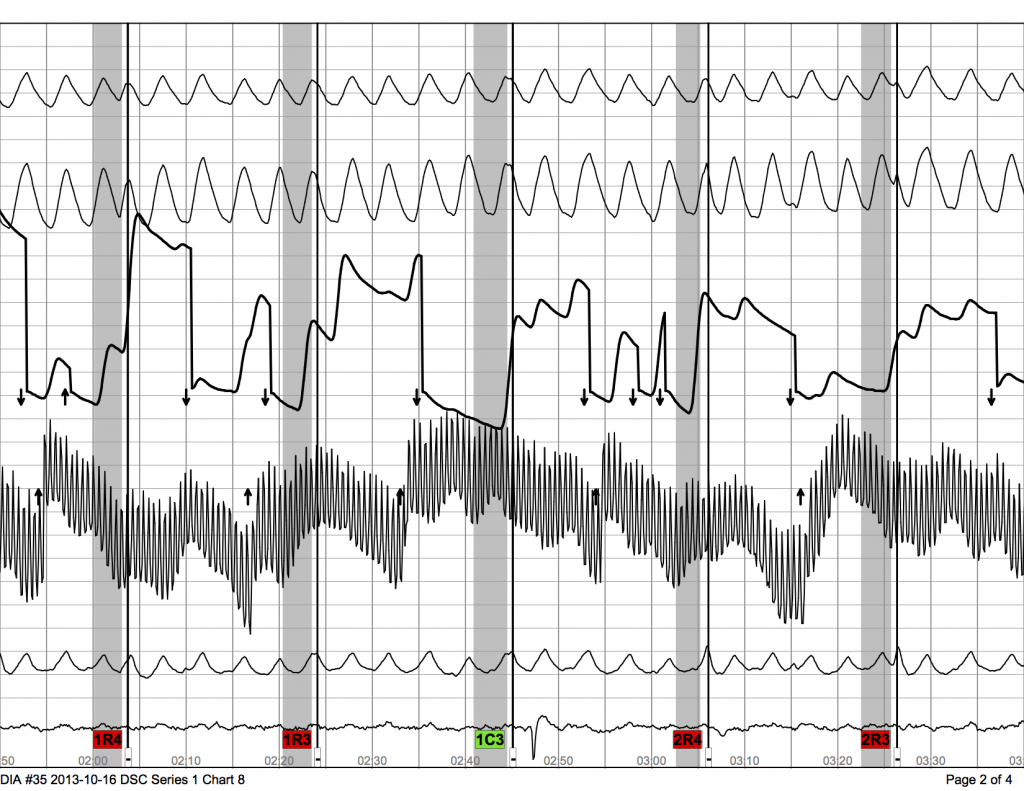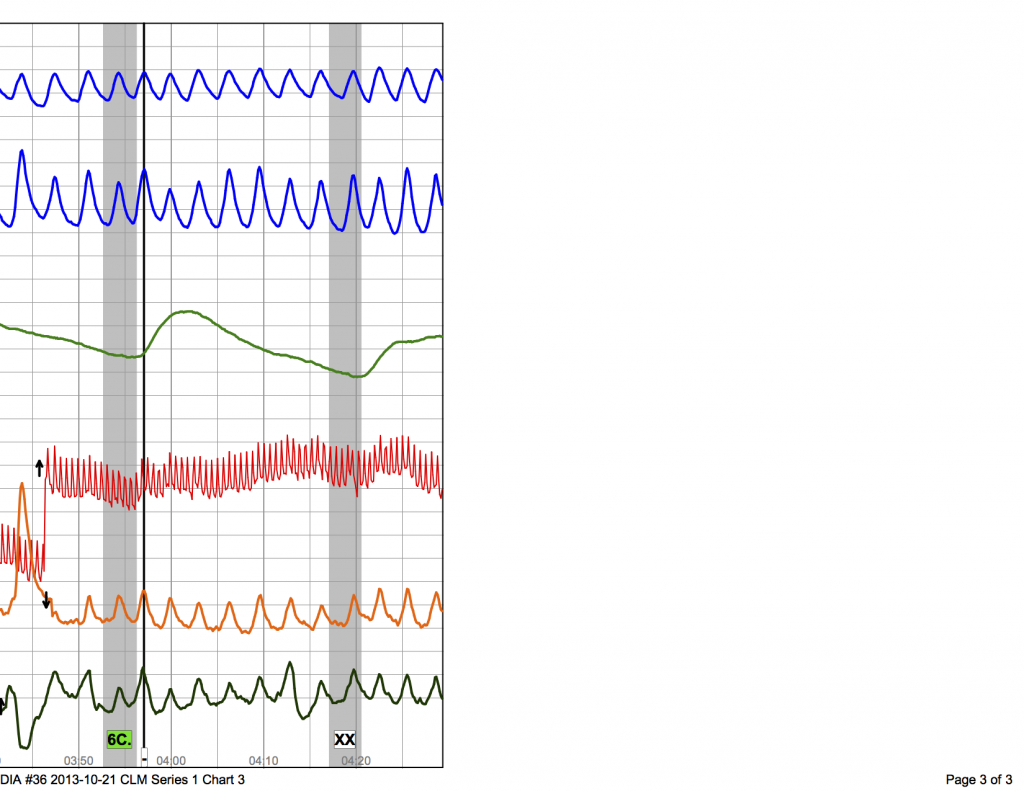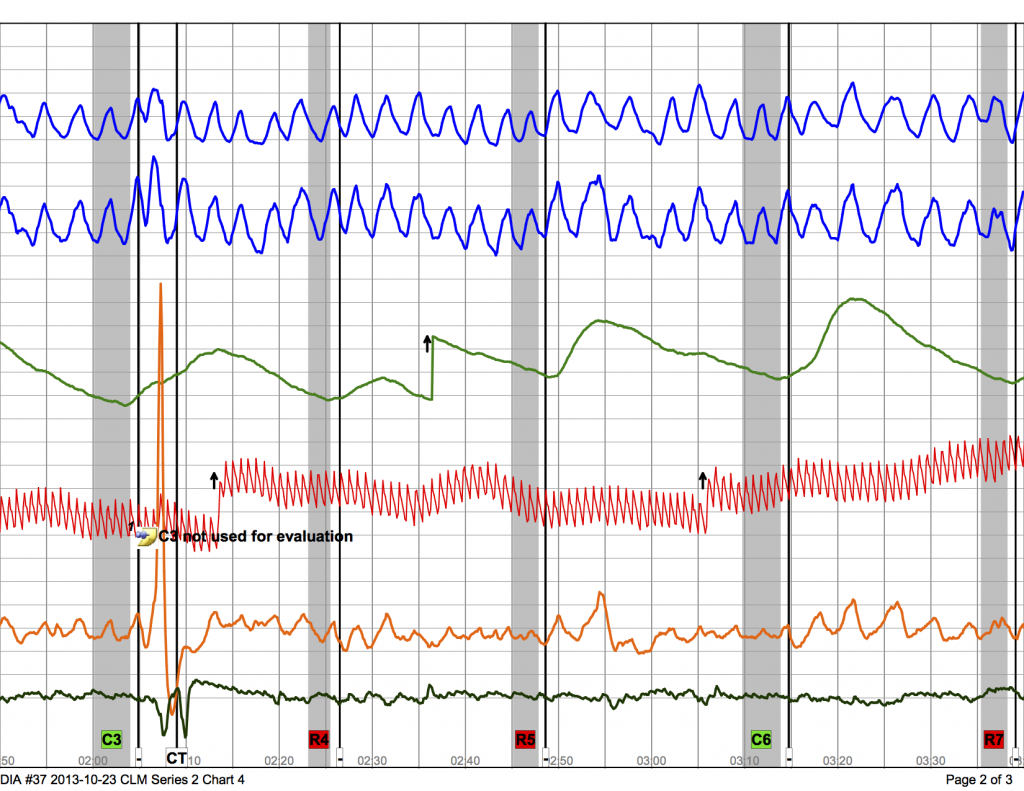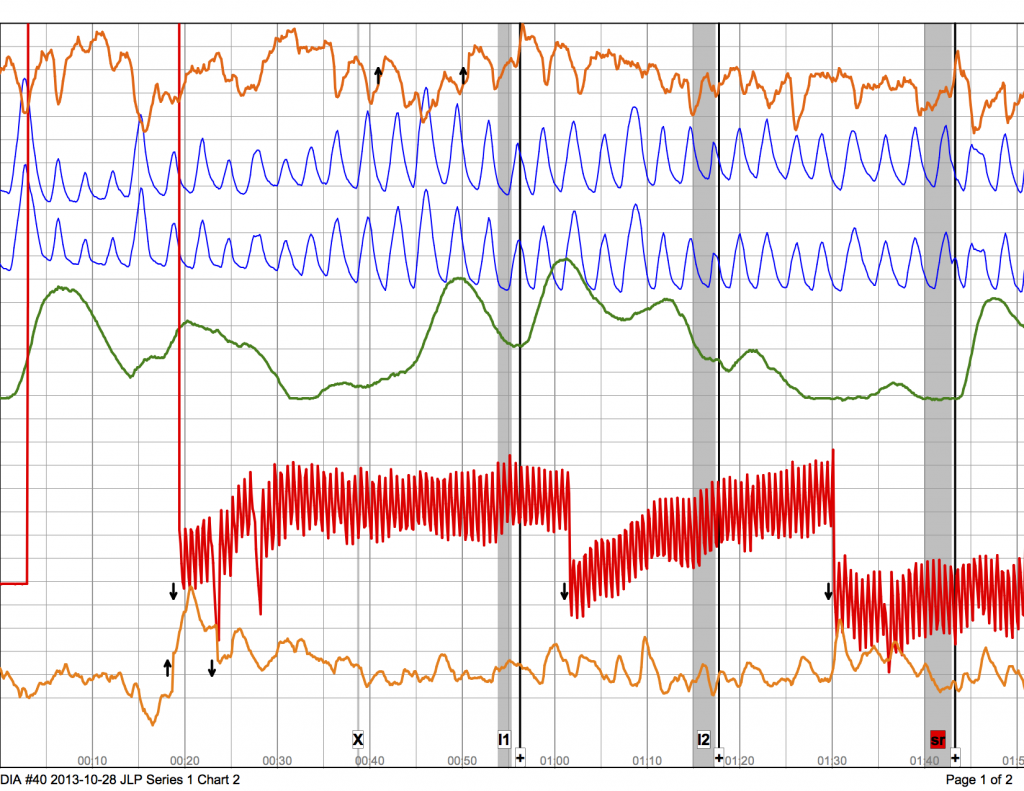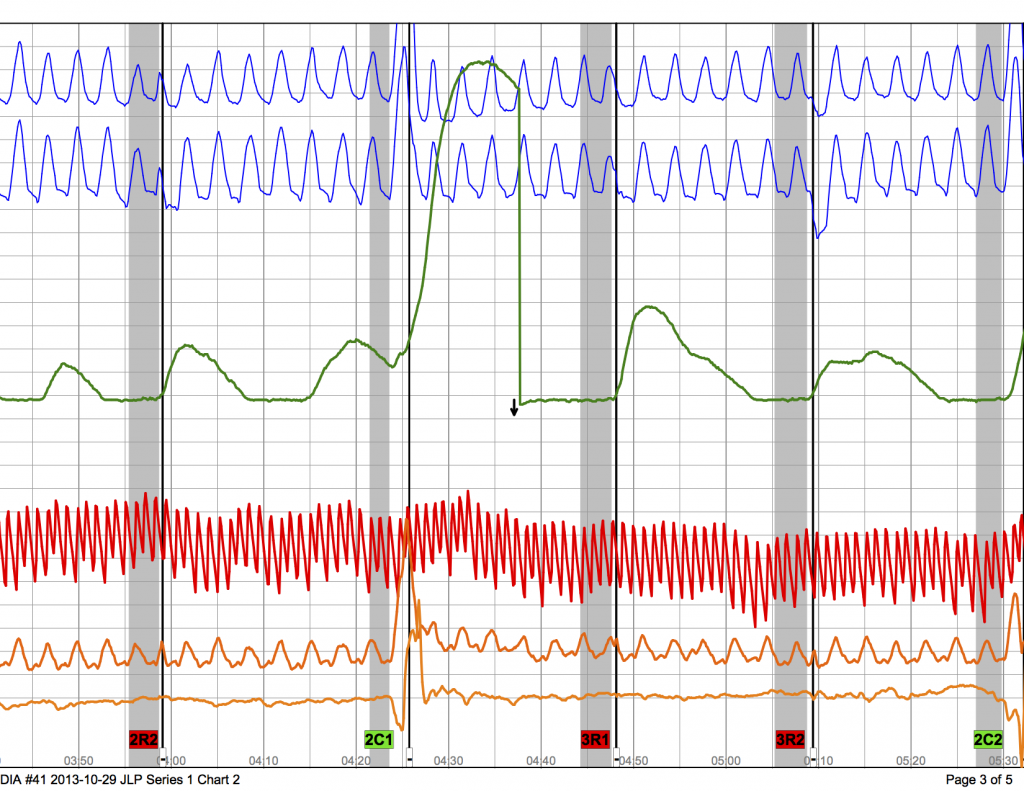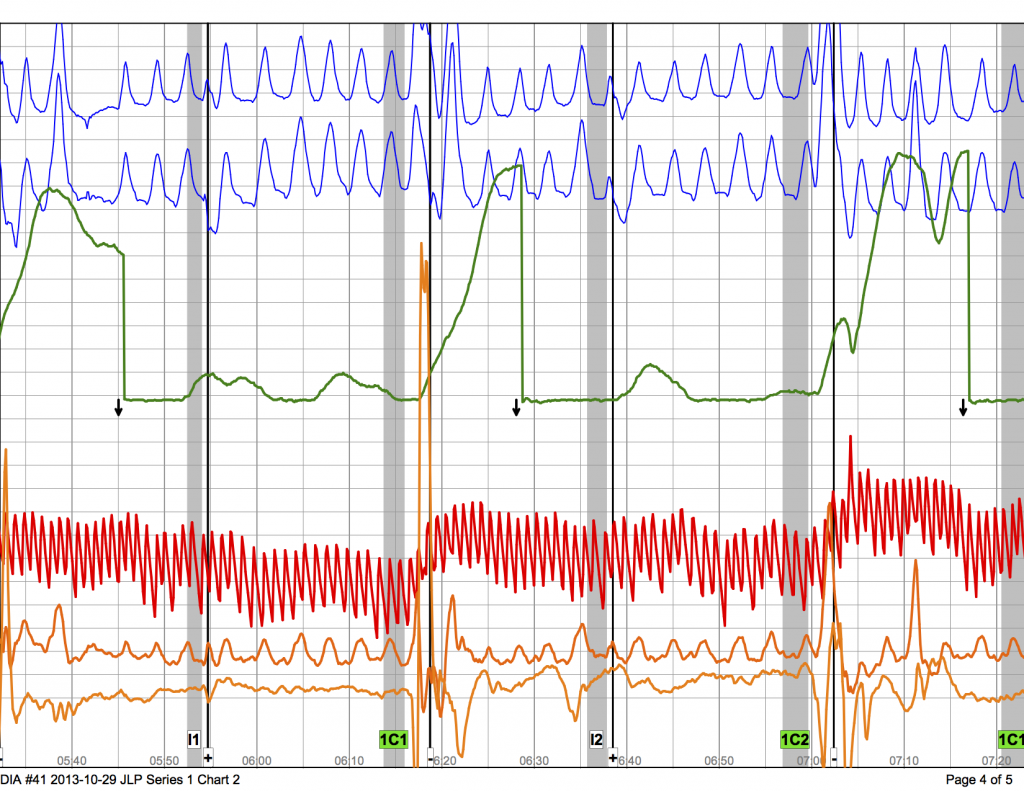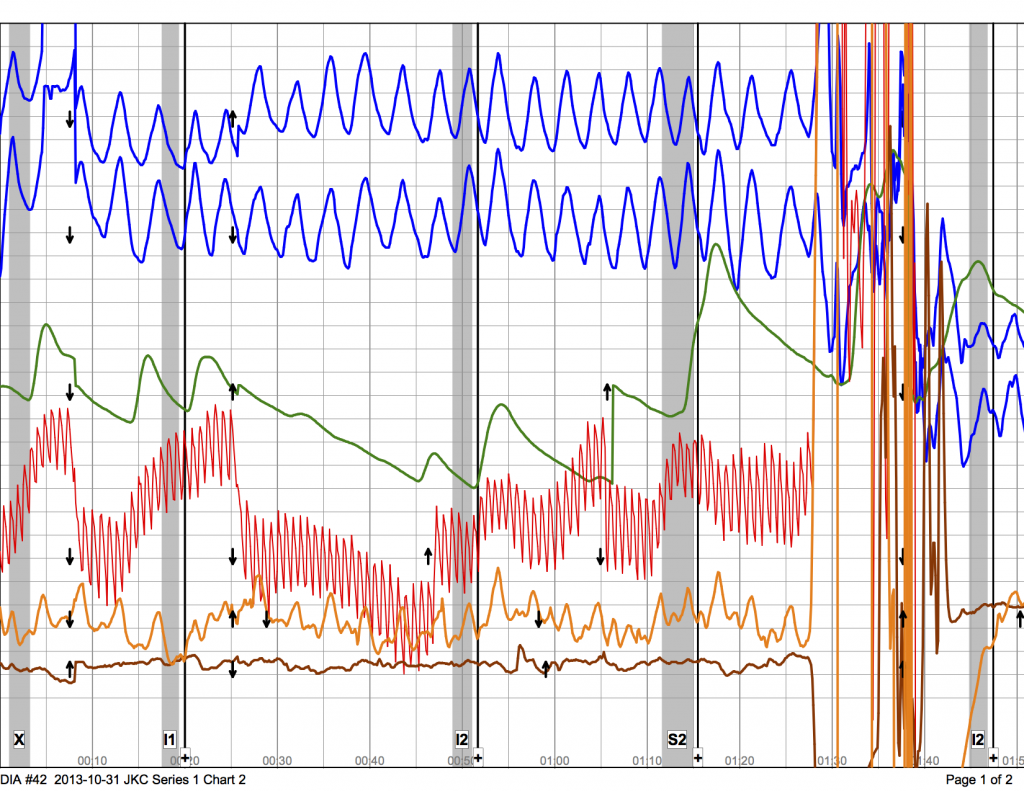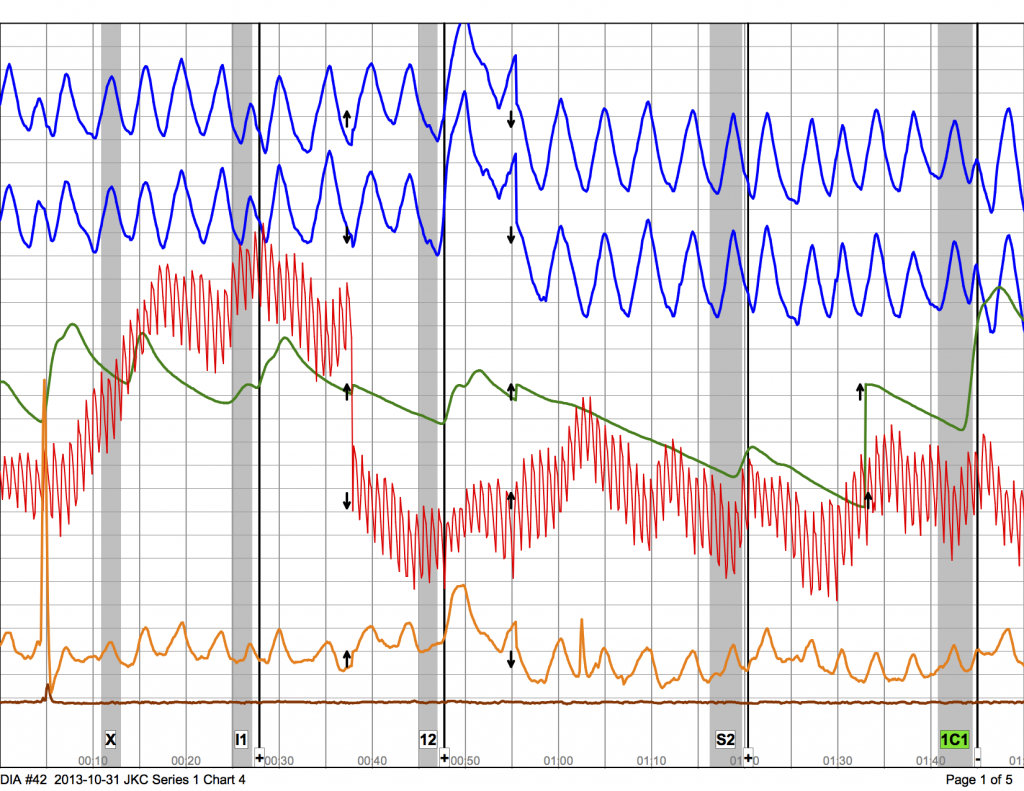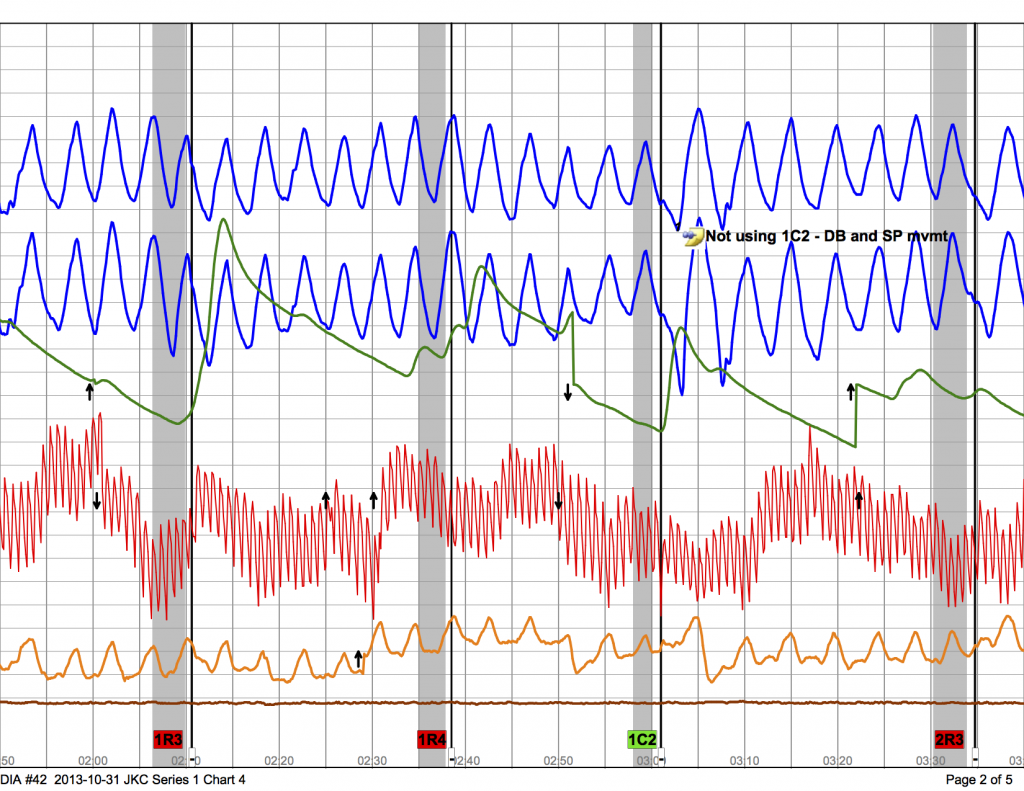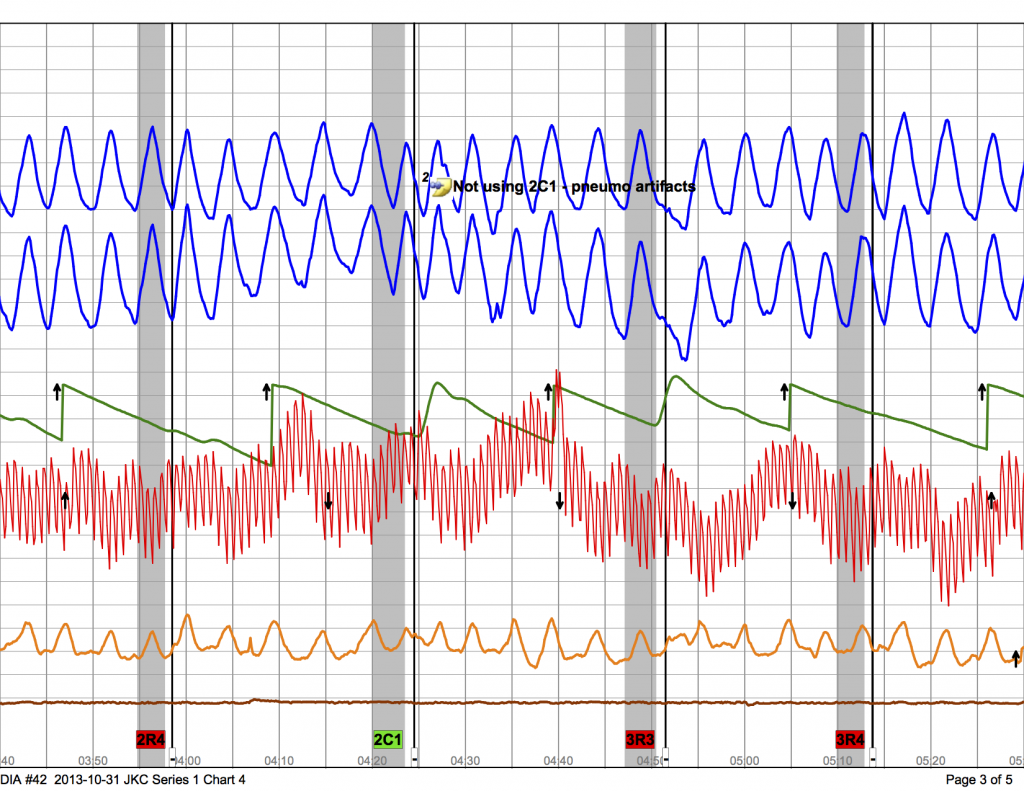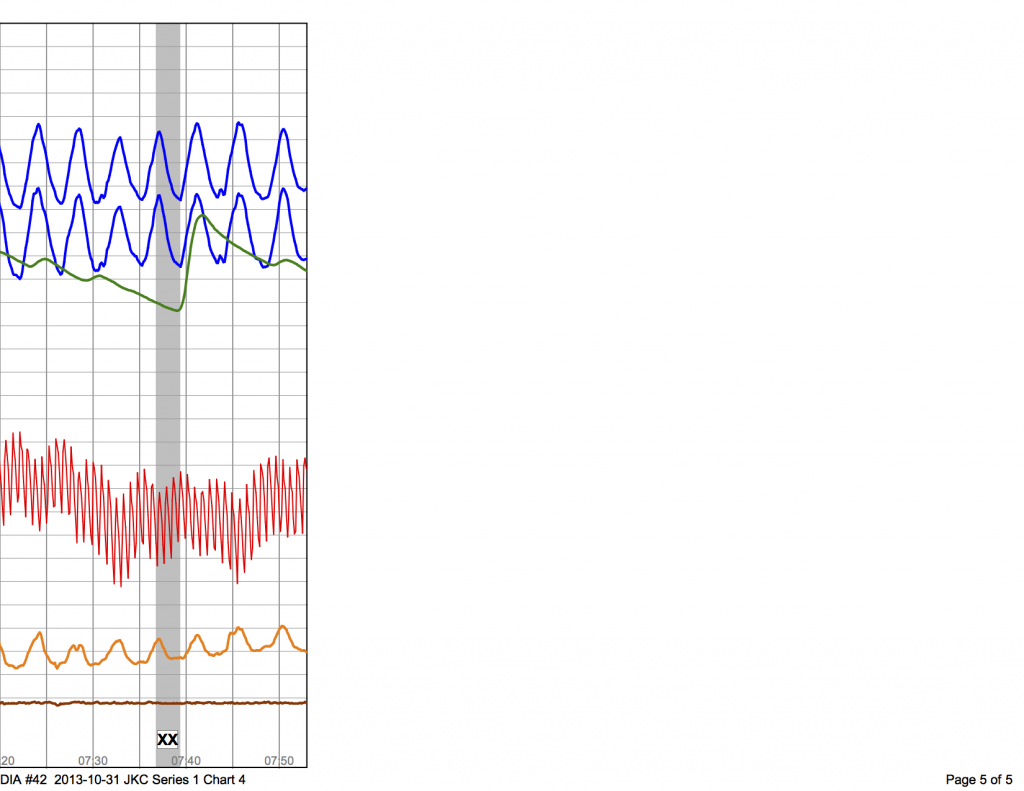Defense Intelligence Agency documents (40 MB .zip archive) obtained by AntiPolygraph.org suggest that the agency lacks the ability to detect sophisticated polygraph countermeasures ((In this context, “sophisticated” doesn’t mean that the countermeasures are complicated or difficult to learn. They’re not. It simply means that they are the kind of countermeasure that a subject with knowledge of polygraph procedure–and its vulnerabilities–would choose to employ. Polygraph subjects are not supposed to know about polygraph methodology, in particular, the true function of the so-called “control” or comparison questions.)) and that spies, saboteurs, and terrorists will have little difficulty deceiving its polygraph operators using techniques such as those described in AntiPolygraph.org’s free book, The Lie Behind the Lie Detector (1 MB PDF) or in Doug Williams‘ manual, How to Sting the Polygraph. The U.S. Government is so concerned about the effectiveness of such techniques that it has targeted Doug Williams for criminal prosecution and may have attempted to entrap AntiPolygraph.org co-founder George Maschke.

It should be noted that the DIA polygraph screening program has never caught a spy. In 2001, the DIA’s senior analyst for Cuban affairs, Ana Belen Montes, was arrested, charged, and ultimately convicted of spying for Cuba. She had in fact been acting as a Cuban agent from the very beginning of her DIA employment: she had been trained by Cuban intelligence how to fool the polygraph, and she succeeded in doing precisely that throughout her DIA career.
A 2006 Senate Select Committee on Intelligence report documents the fact that three fabricators with Ahmed Chalabi’s Iraqi National Congress also passed DIA lie detector tests.
Despite these monumental failures of the polygraph, and in utter disregard of the National Research Council’s conclusion that “[polygraph testing’s] accuracy in distinguishing actual or potential security violators from innocent test takers is insufficient to justify reliance on its use in employee security screening in federal agencies,” the DIA has in recent years moved to expand and outsource its polygraph screening program. ((A contributor to the AntiPolygraph.org message board has recently alleged, with documentation, that “[s]ince March 2010, The Defense Intelligence Agency’s (DIA) Chief of Credibility Assessment, Brett Stern, has spent over 40 million dollars of US Tax Payer money funding a polygraph contractor…whose institution in addition to their entire current management team…have each been [civilly] charged with committing numerous counts of financial fraud….”))
The documents provided to AntiPolygraph.org consist of 18 sequentially numbered “confirmed countermeasure” case files involving 17 examinees (one was polygraphed twice) from late 2013. Confirmed countermeasure cases are those in which the examinee has admitted to doing something in an attempt to manipulate the outcome. Federal agencies routinely forward such case files, stripped of the examinee’s identity, to the federal polygraph school, the National Center for Credibility Assessment (NCCA), at Fort Jackson, South Carolina, for study purposes.
Countermeasure admissions, when they occur, typically result from an accusation by the examiner followed by interrogation in an attempt to elicit an admission. Countermeasure admissions are rare and are a feather in the cap for polygraph examiners, who are typically rated based on the admission rates they obtain. By examining the polygraph charts from these representative cases, we can infer what activity by an examinee is likely to arouse the examiner’s suspicions, leading to an accusation of countermeasure use (and ultimately, perhaps, an admission).
We will analyze each case in turn, but the bottom line is that the key tip-offs that lead to countermeasure accusations appear to be 1) physical movement that shows up on the seat and/or foot pad tracings and 2) deep breathing. Neither of these are techniques that any knowledgeable spy, terrorist, or saboteur would employ. Nor are they consistent with the techniques for passing the polygraph documented in The Lie Behind the Lie Detector and How to Sting the Polygraph.
Instead, the countermeasure attempts that DIA polygraphers are “detecting” are so-called “spontaneous countermeasures” (attempts to influence polygraph outcomes with little or no forethought or planning). Moreover, none of these confirmed countermeasure cases appear to involve anyone who has actually committed an act of espionage, sabotage, or terrorism. Indeed, it appears, based on the sorry state of countermeasure “detection,” that the DIA polygraph unit has little prospect of ever unmasking a genuine spy, terrorist, or saboteur.
Moreover, because DIA polygraph examiners receive their training at the same school as do all other federal polygraphers (NCCA), it is likely that DIA’s shortcomings in polygraph countermeasure detection also beset other federal agencies.
A case-by-case analysis of the files follows. To follow along, download and extract the archive (40 MB .zip file). In it, you will find 18 folders, each with a sequential serial number (from #26 to #43) that includes the date the examination was conducted and (in all but one case) the examiner’s initials. Each folder contains the data associated with the examination, which is readable using the Lafayette Instrument Company‘s LXSoftware. In addition, you’ll find a Microsoft Word document with a brief description of the case, and a folder titled “Documents” which contains a PDF file for each polygraph chart collection associated with the examination. Each PDF chart file includes at the end a list of the actual questions asked.
Case #26
Admitted to manipulated and targeted breathing at Control Questions. Provided a full Sworn Statement indicating researched polygraph on the internet. Was not specific to which website visited.
Series 1 Chart 4 shows deep breathing (the blue tracings) after 1C1 and 1C2, as well as after the unscored sacrifice relevant question (Sac):
Case #27
Admitted to pressing down on both foot pads and seat pad during the comparison questions to alter his physiology. Claims no research conducted.
See Series 2, Chart 3 where there is a spike on the foot pads (the brown tracing at the bottom of the chart) at SR2; in Series 3, Chart 3 there are spikes on foot pads at 5R, I9, 4R, and 3C:
Case #28
Admitted to performing deep breathing at the lie questions. Claimed he learned how to beat the polygraph by watching movies, and reading spy books.
Note that in Series 2, Chart 1, examinee asked to stand up due to his back; chart collection was terminated to re-adjust pneumo (breathing) tubes. Might this kind of behavior make a countermeasure accusation more likely?
Series 2, Chart 2 shows deep breaths on 1C1, 1C2, 2C1, 2C2, and 2C1:
A similar pattern appears on Series 2, Chart 3.
Case #29
Targeted Control questions with distorted breathing and movements at control questions. Did not make it through any of the security topics. Admitted to CM’s on second day of testing on 9/30/2013.
Note that Series 1, Chart 2 was stopped, with examiner noting on chart “BI and MI given prior to this chart” and “test stopped to again give MI.” BI means “breathing instructions” and MI means “movement instructions.” When such instructions are given, it means the examiner already suspects that the examinee is attempting to manipulate the charts:
Series 1, Chart 3 shows activity on seat (magenta) and foot pads (golden brown) at 1C2, 2C1, and especially 2C2, but also to an extent at 1R1 and 1R2:
Series 2, Chart 1 has a note by the examiner “BI [breathing instruction] and MI [movement instruction] given prior to this chart” and “moved to SA [silent answer] test.” In the “Silent Answer” test, the examinee is instructed to answer the questions silently, in her head. Polygraphers often use this technique when countermeasures are suspected. At about 3:44, a large spike appears on the movement sensor channels, and the chart is marked “MI” [movement instruction]:
Series 2, Chart 2 is also marked “BI and MI given prior to this chart,” and spikes on movement sensors are seen at 2 (irrelevant), 4R, 3C, 7R, and 8C. Clearly, this examinee had no idea what (s)he was doing:
Case #32 (a continuation of Case #29)
(Second Day of Testing) – Frequent movement in seat sensors from the beginning of the ACQT, with movement instructions. Movements continued, and breathing was erratic. Posttest interview Subject rendered a written sworn statement confessing he intentionally pressed his leg down, as he had learned from reading CI reviews of how Mendez [sic, correct Montes] and Ames beat their respective examinations.
Series 1, Chart 1 (the “acquaintance test,” with which polygraph sessions usually begin) commences with a note “surveillance chart examiner out of room.” This means that the polygraph examiner monitored the chart tracings before questioning began, looking for any sudden change (for example, a change in breathing) once questioning began. This surveillance period lasted until 1:25 and shows three distinct spikes on the movement sensor channels. At question 3 (irrelevant) there is a note, “breathe xteady” [sic, “steady”] with a large spike on the movement sensors and cardio channel, accompanied by a relatively deeper breath. There is a spike on the movement sensors at question 5, too:
The examiner repeated the acquaintance test, along with instructions about breathing and movement. Upon completion, the examinee was placed under “breathing surveillance”:
In the next chart collection, Series 1, Chart 3, the examiner ran the polygraph instrument for some three and a half minutes without asking any standard polygraph questions. An annotation reads “surveillance tape continues while talking to subject.”
In the next chart collection, Series 1, Chart 4 with the actual counterintelligence questions asked, the subjects appears to cease physical movements, and the seat and foot pad tracings largely mirror the breathing tracings.
In Series 1, Chart 5, the examiner ran another “surveillance chart,” leaving the polygraph instrument to record for about three minutes after the last question was asked. Reactions on the seat and foot pad tracings appear at questions 6C, 4R, 5R, 7R, and 1.
In Series, 1, Chart 6 (the final chart), reactions on the seat and foot pad tracings appear at 1, 7R, 3C, 4R, and 6C, with the examiner three times admonishing the examinee to keep still.
This examinee, who pressed his or her legs down on both control/comparison and relevant questions, had no clue about sophisticated polygraph countermeasures.
Case #30
Subject targeted the “Lie” questions by breathing deeply and thinking of a sports game that made him excited. Subject admitted he targeted the comparison questions because he omitted a foreign contact on his SF 86. Sworn Statement provided and documented he obtained the information from a book named “Spy the Lie.”
Series 2, Chart 2 shows relatively deep breaths after 1C1, 1C2, and an especially deep breath at 2C2, which the polygraphed marked “DB” on the chart. But also note the relatively deep breaths after the relevant question 3R2. This is something that someone who understood polygraph procedure would not do:
Series 3, Chart 1 shows deeper breathing after 1C1, 1C2, 2C1, and, to a lesser extent, 2C2. It is not surprising that the polygrapher inferred countermeasure use.
Note that in the entire set of 17 cases, it appears that there are no countermeasure accusations based on shallower breathing.
Case #31
Subject provided a written sworn statement admitting he conducted CM’s [sic] in 2007 as well as on this day of testing. Subject attacked control and relevant questions by slightly moving hands and feet during the test.
On Series 2, Chart 3, there appears to be some activity on the lowermost tracing on 1R2, 2R1, 2R2, and 3R2 but not on the control questions:
On Series 2, Chart 4, there is activity on both the seat and foot sensors (the two lowest tracings) at 3C, and the examiner notes “Stopped due to movement”:
On Series 2, Chart 5, there is activity on the seat and foot pads at 2SR (a sacrifice relevant question) and again at 3C, and the examiner notes “Stopped due to movement.”
On Series 2, Chart 6, there may be activity on the seat pad at 2SR, 3C, 5C, and 7C.
In summary, the examinee demonstrated that he didn’t understand polygraph procedure or effective countermeasures by producing reactions to relevant questions and by using movements that could be recorded by the seat and foot pads.
Case #33
QC [Quality Control] overcalled Examiner during testing. Seat and Foot sensor was too low. Once increased movements were observed three out of four control questions. Examiner interrogated and obtained a confession where Subject admitted to moving his buttocks and feet during lie questions. Did not claim to have conducted research.
Not mentioned in the DIA case summary is the fact that Series 1, Chart 2 was abruptly terminated after the examinee took a deeper breath after the asking of 1C2:
Series 1, Chart 6 was also “stopped due to breathing” at 2C4 (a reaction also appears on the seat pad tracing):
And Series 1, Chart 7 (the last one) was “stopped due to movement”:
Case #34
Provided a written Sworn Statement admitting he moved his fingers, wiggled his toes, clenched his buttocks, arched his back, and controlled his breathing at the background questions. Claimed he did not conduct research.
Foot pad tracing shows pronounced activity in Series 3, Chart 4, not only at directed lie control questions, but also at relevant questions:
This examinee had no clue about effective polygraph countermeasures.
Case #35
Confirmed CM: Subject admitted to doing research on the internet and moving on many control questions.
Series 1, Chart 4 was “stopped due to subject dragging out ‘no’ answer.” Series 1, Chart 5 was “stopped due to answer mechanics.” Series 1, Chart 8, appears to show motion on seat or foot pad channels at 1C3 (foot), 2C4 (seat), 2C3 (seat). Whatever “research” the examinee did was woefully inadequate:
Case #36
Confirmed CM: Subject admitted he was tightening leg during answering control questions. Obtained the information on CM’s [sic] from some U.S. Marine friends.
In Series 1, Chart 2, the examinee is given a Silent Answer Test with head nods for answers, with feet elevated on a box and shoes off. “Examiner stopped chart as examinee explained legs were moving, obtained additional box.” The use of the Silent Answer Test, and the demand that the examinee remove his or her shoes suggests that for some unstated reason, countermeasures may have been suspected or anticipated from the very outset. Note that in Series 1, Chart 3, for which the Silent Answer Test with shoes off was also used, there is apparent motion on 5R (seat and foot sensors):
Case #37
Confirmed CM: Subject admitted he was using physical and mental CM’s during testing. Claimed no research was conducted.
Examiner used Silent Answer Test from the first chart after the stim test (acquaintance test), suggesting that countermeasures may have been suspected from the outset. Series 1, Chart 2, question 1C1 was “not used for evaluation based on movement,” but movement is not clear on motion sensor tracings; Series 2, Chart 4 shows a large reaction on seat pad to C3; question has been marked “CT”:
Case #38
Confirmed CM: Subject admitted he was controlling his breathing to beat the test. Very little else was obtained to include if and where any research was conducted.
While the write-up notes only an admission to controlled breathing, Series 1, Chart 2 was terminated because of “excessive foot movement” that was clearly visible on the foot pad tracing (the bottom-most tracing on the chart):
Breathing seems very even in most charts, with some brief holding when questions are asked. In Series 2, Chart 4, the polygrapher let the chart run 10:20 without the cardio cuff, without asking any questions. The examiner proceeds with a Silent Answer Test after this, indicating that he suspected countermeasure use. Series 2, Chart 5 shows holding at the top of the respiratory cycle on question 6C, which is taken as an indication of countermeasure use (but is something no one who knew what they were doing would do):
In Series 2, Chart 6, the examinee answered question 6C verbally, despite it being a Silent Answer Test. In Series 2, Chart 8, the examiner let the chart run more than 23:20 without cardio cuff, without asking any questions.
Case #39
Confirmed CM: Subject admitted she was taking DB’s [deep breaths] at relevant questions. Thought she could manipulate the test. Even continued during silent answer charts. Claimed no research was conducted.
Series 1, Chart 2, deeper breath observed on 1R1, 1R2, and 2R2, but not 1C2; examiner stopped to address the deep breaths and switched to SAT. Series 1, Chart 3, deep breath at 1R1, 2R2. Both taking deep breaths and targeting relevant questions is something that no one who understands polygraph procedure and countermeasures would do. The examinee’s claim that no research was conducted is entirely credible.
Case #40
Confirmed CM: Subject admitted he was moving his toes, and moving in chair. Was not asked by examiner about research conducted.
Series 1, Chart 2 shows deep breath and large response on foot pad at 1C1, whereupon examiner “stopped test to address movements and breathing”:
Series 2, Chart 1 shows response on foot pad at 2sr (a sacrifice relevant), accompanied by a large electrodermal response (tack in shoe?). Additional activity on foot pad sensor on 3C, 4R, and 5R. Examiner notes “multiple instructions about not moving at end of chart”:
Series 3, Chart 1 shows a deep breath and foot pad activity on question 5R. Series 3, Chart 3 shows large response on foot pad sensor after the second asking of question 1 (irrelevant) and 3C.
Case #41
Confirmed CM: Subject admitted he was moving on both days of testing. Was not asked by examiner about research conducted.
During the stim test (Series 1, Chart 1), a large reaction on foot pad sensor appears at #4. Series 1, Chart 2 shows similar reactions at 1C1, 1C2, 2C1, 2C2, 1C1 (second asking), 1C2 (second asking), and 1C1 (third asking); in other words, activity on foot pad sensor for each asking of every control question:
In Series 2, such activity ceases. Although the case summary speaks of testing on two days, all charts are dated 2013-10-29.
Case #42
Confirmed CM: Subject admitted he moved his foot, fingers, twitched his legs, and manipulated his breathing during control questions. Was not asked by examiner about research conducted.
Very strong reaction on foot sensor, mirrored on seat pad, to S2 (a sacrifice relevant question); examiner terminated chart:
Series 1, Chart 3 reaction on foot pad sensor at 2C1, examiner marked chart “Did not use 2C1.” Series 1, Chart 4 deep breath at 1C2, examiner marked “not using” because of “DB and SP mvmt”; the second asking of 2C1 is marked “Not using 2C1 – pneumo artifacts” but the only “artifact” is a small notch at the bottom of a breathing cycle. 2C2 marked “Not using 2C2 – DB and SP mvmt”:
Case #43
Confirmed CM: Subject admitted to controlling breathing to the DLC’s [directed-lie control/comparison questions] and PLC’s [probable-lie control/comparison questions]. Was not asked by examiner about research conducted.
Examinee didn’t target any questions for reactions, but rather maintained a regular breathing rate, including on irrelevant questions.
The case summary note also includes the following remark:
Please Note: Examiners are receiving training soon on interview and interrogation techniques, questions that must be asked about countermeasures, as well as how to obtain a proper statement.
